The NZXT Kraken Z63 & X73 AIO Cooler Review: Shiny On Top, Solid Underneath
by E. Fylladitakis on August 19, 2020 11:00 AM EST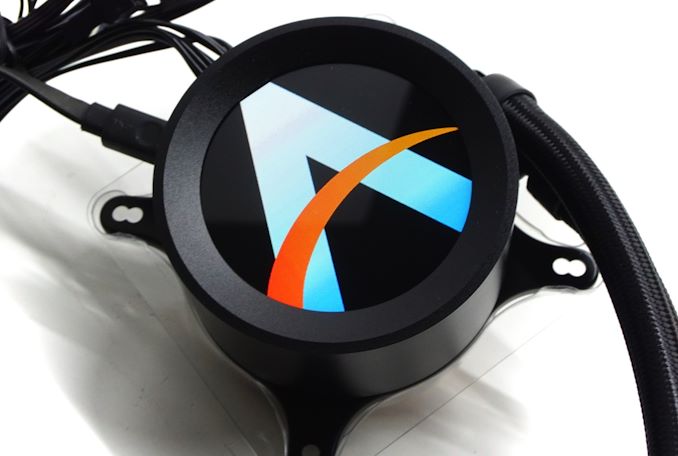
Ever since it was founded back in 2004, NZXT has been focused on the always-lucrative PC gaming market. The company started out with just a few PC cases, yet their unique aesthetics and features were more than enough to let the company establish a solid foothold in the advanced PC market. Several years later, NZXT slowly began diversifying their product portfolio by adding cooling and power products to it. Today, the company produces a large variety of PC cases, cooling, and power products, as well as PC peripherals and accessories.
NZXT entered the PC cooling market nearly a decade ago by releasing all-in-one (AIO) liquid cooling solutions and accessories for them, including GPU mounting brackets. However unlike other manufacturers who have opted to build large, diverse product lineups, NZXT never kept more than a handful of AIO coolers available in their product line-up. Instead, the company has focused on delivering a few quality and aesthetically-unique designs, rather than trying to take the competition down on raw performance alone.
Today we are taking a look at NZXT’s latest liquid coolers, the Kraken X-3 and Z-3 series. These are more of a refresh rather a total upgrade over last year’s X-2 series, but NZXT has made some notable tweaks. Between the two families there are five different coolers in three sizes, covering the usual 240/280/360mm configurations. Both the X and Z series utilize the same cooling hardware, but NZXT has positioned the Z series as a premium option with a novel aesthetic feature – while the X series has RGB lighting on top of the pump base, the Z series tops its base with a full-fledged (and full color) LCD screen.
For this review we're checking out both the X73 and the Z63, giving us a full view of the performance and features we can expect from most coolers that NZXT currently offers.
| NZXT Kraken Z-3 and X-3 Series | ||
| Fan Configuration | X Series | Z Series |
|
2x 120 mm |
X53 ($130) |
- |
|
2x 140 mm |
X63 ($150) |
Z63 ($250) |
|
3x 120 mm |
X73 ($180) |
Z73 ($280) |
Packaging & Bundle
The new Kraken Z-3 and X-3 coolers ship in relatively simple packaging, based on the same white/purple artistic theme that NZXT has used over the last few years. A picture of the cooler covers the otherwise plain front of the packaging. Inside the box we found the coolers and their parts well protected by custom cardboard inserts.
All of the coolers share practically the same bundle, which is limited to the basics. Inside the box we only found the required mounting hardware, the necessary wiring, and an installation manual. We should also note that NZXT does not include the TR4 socket mounting plate by default, but they do have one available as an optional part for Threadripper owners.
The NZXT Z63 and X73 come with two 140 mm and three 120 mm fans respectively. The company went with high quality fans, with fluid dynamic bearing (FDB) engines and anti-vibration mounting pads. They are not overly powerful, though with their flat-bladed, high-pressure design they shouldn't have much trouble overcoming the resistance of the radiator. There is no lighting about the fans, with the company focusing their artistic enhancement efforts on the pump block instead.
The NZXT Z63 & X73 AIO Coolers
Digging into our review samples, let's start with deciphering NZXT’s cooler names. The first character denotes the series, the second the size, and the third is the version. For example, the Z63 and the Z73 coolers belong to the same series and share most features but their radiator size differs, while the X73 and Z73 are of the same size but belong to different series. Thus the Z63 and the X73 that we will be reviewing today check both of these boxes, allowing us to explore the differences between the Z and X series and measure the thermal performance of both the 280 mm and the 360 mm coolers.
So what sets apart NZXT's X and Z series coolers? In short, it's all about displays. For the Z series, NZXT has topped off the the main block assembly with a 2.36” LCD screen. The LCD can be programmed to showcase everything from images and GIFs to real-time data. And despite the low 320×320 px resolution, it is crisp and bright, with beautiful color reproduction.
Otherwise for the X model, NZXT dials things back just a tad and uses a mirrored top with LEDs placed under it. Once powered, the company logo and a ring appear, with the mirror creating an infinity effect about the ring. The LEDs are RGB and users can adjust the colors of the ring using NZXT’s CAM software. On the whole it is a relatively simple and attractive visual setup.
Other than the display topping the main block, the X and Z series coolers are all but identical. The rest of the main block is the same between the two, going right down to the contact plate and mini pumps. So at the base of NZXT's LCD and LED handiwork lies a circular copper plate, secured on the plastic body with eight stainless steel screws. A layer of thermal paste is pre-applied onto the contact plate. It is not machined down to a mirror finish but it is smooth and entirely flat. The contact plate is not large enough to cover Ryzen Threadripper processors and, although it should work okay, we generally advise against using coolers that are not specifically developed for the TR4 socket on Threadripper processors.
Moving on, let's talk about NZXT's radiators. Their different sizes aside, the radiators of both the Z63 and X73 seem to be identical in terms of design. The subtle but significant difference is that the 120 mm fan radiator of the X73/Z73 is 26 mm thick, while the 140 mm fan radiator of the Z63/X63 is 30 mm thick. It's just a few millimeters, but it's something that should absolutely be considered confirming the cooler’s compatibility with a given case, as sometimes a few millimeters makes all the difference. Both radiators are typical dual-pass cross-flow designs, with tiny fins soldered on thin oblong tubes. This is by far the most dominant radiator design for AIO systems and rightfully so, as it offers the best efficiency within limited proportions and for the temperature differences that AIO coolers have to deal with.
The hose fixings on the radiator side are immovable, making them a bit less flexible during installation. In order to cope with long-term evaporation losses, NZXT is using what they are calling “ultra-low evaporation” high-density rubber tubing, with external nylon sleeve braiding for additional mechanical protection. NZXT also took the time to punch the company logo on the sides of the radiators.



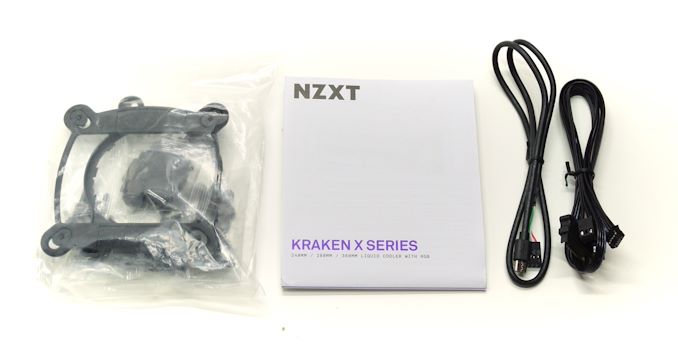
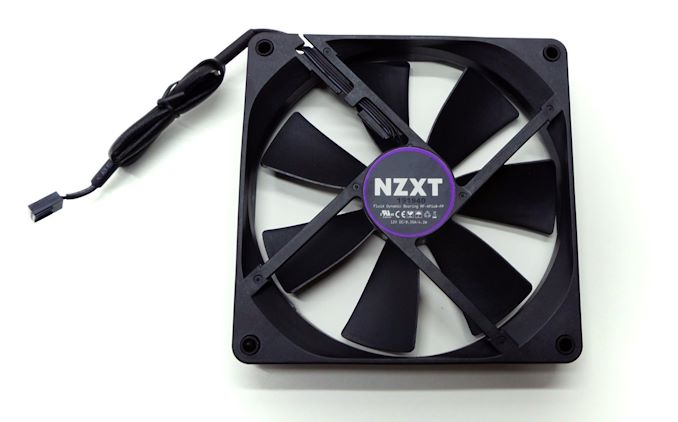
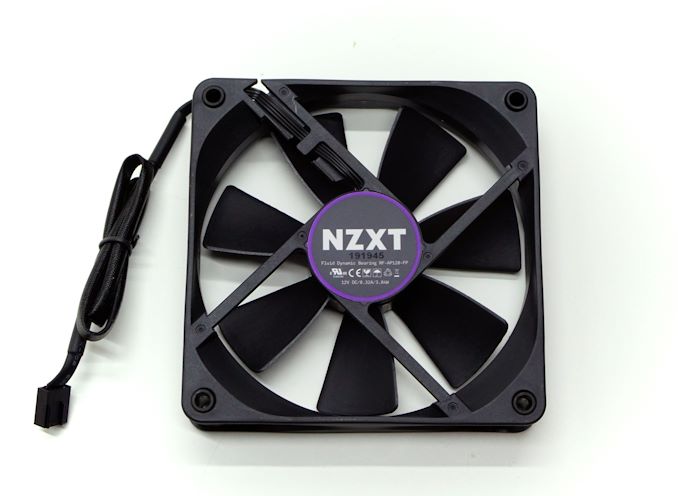
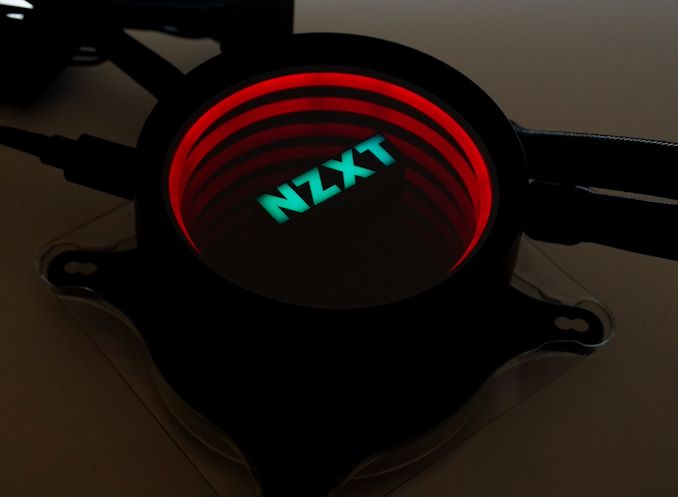
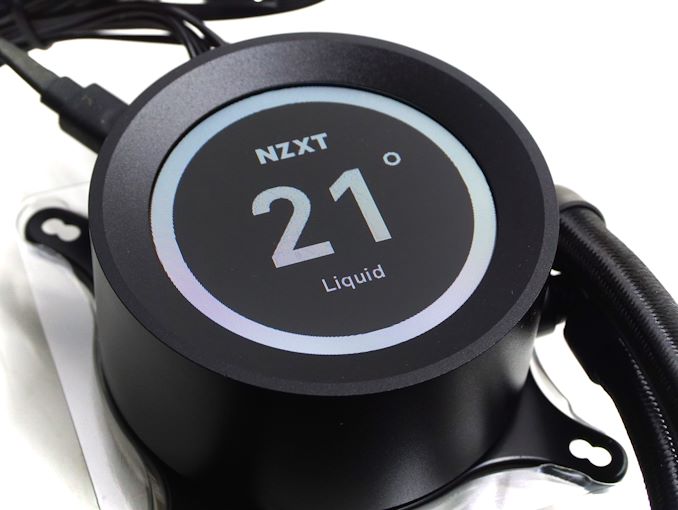
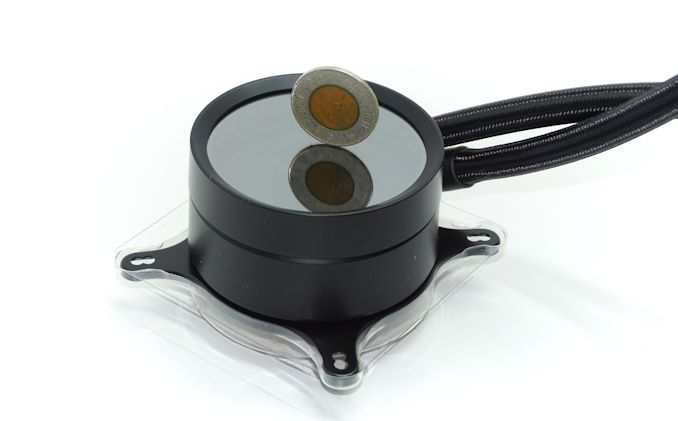
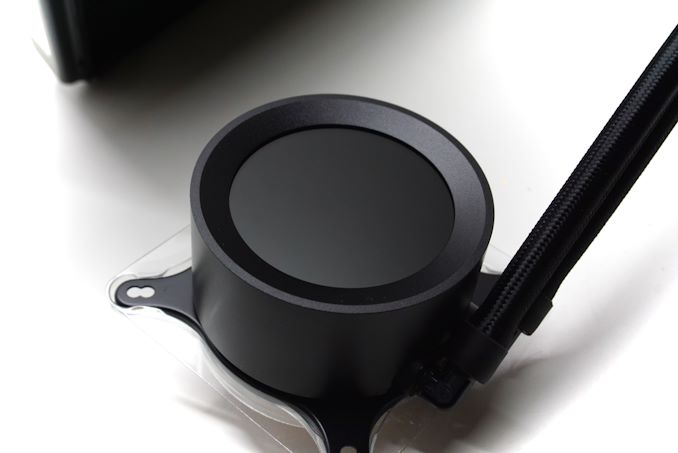
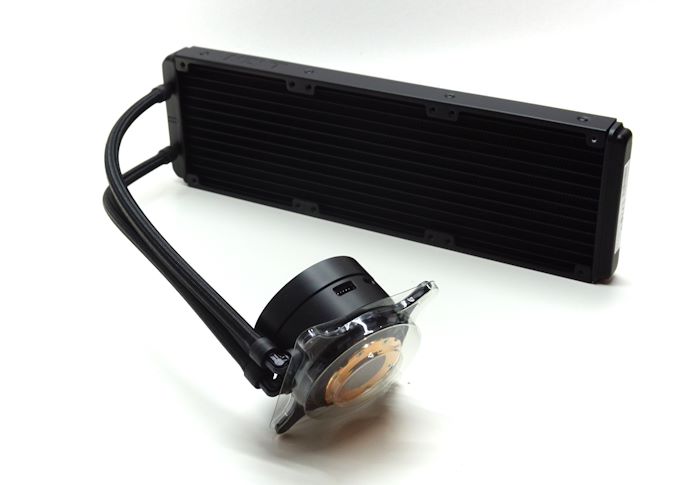
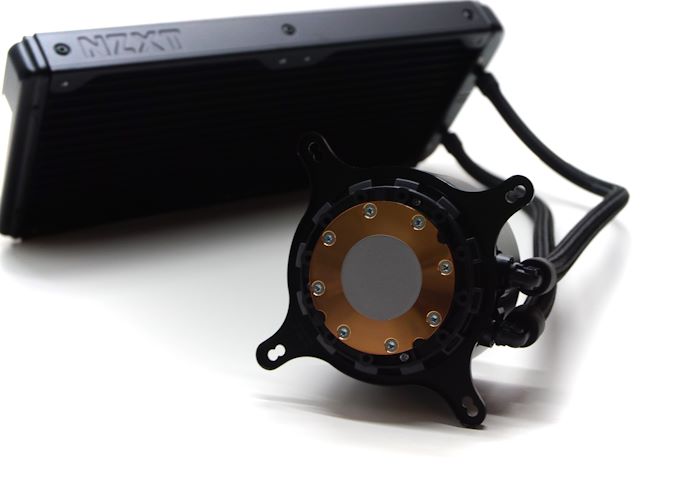
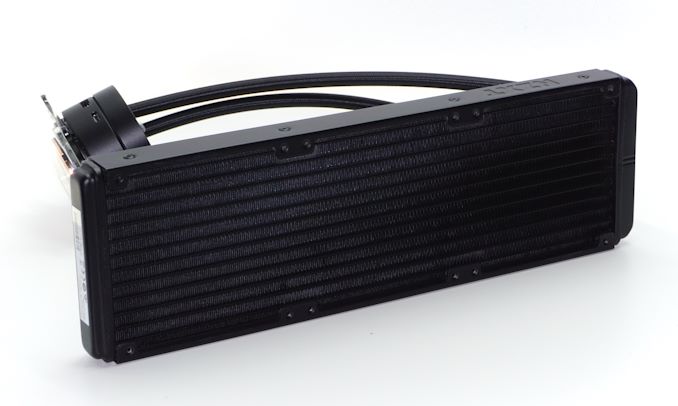
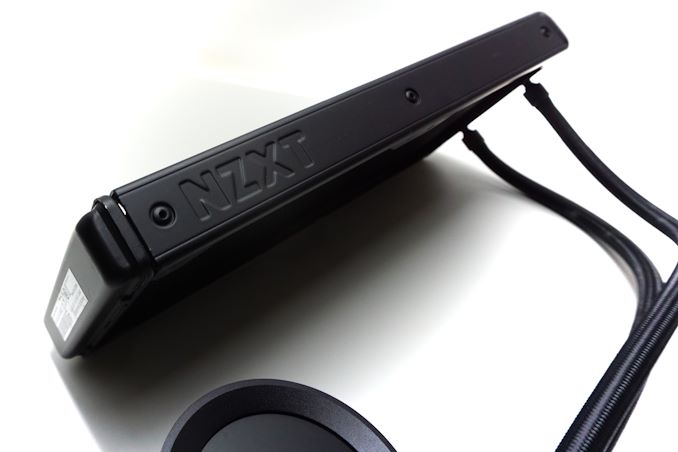









61 Comments
View All Comments
QB - Thursday, August 20, 2020 - link
I ran my H80i for close to 8 years (not sure the exact date, but it was at least 7 for sure) and only retired it this year for an iCUE H110i RGB PRO XT. Not a single leak, and it only suffered from a minor amount of liquid permeation... If I was to guess how much liquid disappeared over the 7+ years based only on the sound of the liquid moving around the radiator, I would say it was maybe 25%. I did not "need" to retire it, but with all new gear sitting under it, I figured an all new cooler was also warranted :)QB
silencer12 - Thursday, August 20, 2020 - link
Repeat after me. You will eventually be using liquid cooling since air cooling will not be able to keep up in the future because processors will generate much more heat.Guspaz - Thursday, August 20, 2020 - link
Air cooling can handle a fully loaded 280W threadripper without trouble. Consumer chips are still at 105W. I think we’re good for a while yet. Liquid cooling does not substantially outperform air cooling until you go larger than 240mm rads, where space can become a concern.Luminar - Thursday, August 20, 2020 - link
Future processors will generate much more heat?Are you talking about Intel's processors in 2022 (if Intel still even exists)?
Unashamed_unoriginal_username_x86 - Thursday, August 20, 2020 - link
Intel isn't going to up and disappear because they lost the DIY segment, it has 10x the revenue of AMD, and a lot of market share for AMD to bite into still.Speaking of the DIY market, it's very popular to overclock there, and the biggest bottleneck outside of if it's unlocked is thermal management.
silencer12 - Thursday, August 20, 2020 - link
Yes, future processors will generate more heat. Likely, in my opinion. I am talking more than 2-4 years in the future.Intel made 71.9 billion (2019). Of course they will exist. They are coming out with their own graphics cards.
@unshamed explained the rest already for me below on market share.
PeachNCream - Friday, August 21, 2020 - link
I don't think you will see widespread need for water cooling in desktop PC hardware in the near future. Not when the average desktop CPU currently sits between 35-65W TDP with a few halo models reaching to +95W. Compute resources have to meet other targets besides more instructions per second in order to be economically viable products. That, of course, dismisses enterprise workloads in data centers where I think liquid cooling might be a more reasonable consideration and where packing as much density into a given rack while having the staffing and vendor support to handle potential liquid cooling is a fair bit more doable.silencer12 - Friday, August 21, 2020 - link
Acknowledged.Tom Sunday - Thursday, October 8, 2020 - link
I just purchased my all new prebuild PC from my local 'strip-center' tech-shop for $800 cash including a used RTX 1080 ($95) from a cryptocurrency miner since the mining days are now virtually a thing of the past. Yes...Intel has a lot of cash and more even today after just spinning off one off their subsidiaries. NVIDIA just paid $40 billion for ARM. Making CPU's? Corsair went public and looking at their "S1-document filing" made Mr. Paul (CEO) a cool $100 million with stock options. My Reality: The boys at the computers show were laughing that some highly touted AIO's now costing more then brand new older generation CPU's.They said that AIO water-cooler purchases applies to less than 20% of all customers or people coming to the show. Furthermore that the total USA motherboard market represents up to 90% of solely 'mainstream boards' between $90-$125 and which generally do not overclock. Madnu said..."For the man on the street cash is tight." I am not good with numbers and marketing and many other things so what do I know? But listening to the 'geek-team' from Bangladesh I inherently know something is not right with the hardware prices as touted on the open market. Paying $280 for a AIO? Meanwhile I am back in my basement command center listening to the Mugen-5 humming along. Playing Fallout 4 for the very first time in 'Max' settings. Today Mom is baking a strawberry pie. Life is good.Beaver M. - Friday, August 21, 2020 - link
Judged by what?AMD, whos CPUs always were running hotter/less efficient than Intel at the same manufacturing process?
Intel, who is still stuck with hot-headed 14 nm CPUs?
Dont make me laugh. Telling the future by the unique situations we have now, is pretty nonsensical.
Even in 10 year, its more likely that manufacturers will optimize their case ventilation and/or space for air coolers.
I mean, most midi cases have space for 4 to 6 more D15-size air coolers, that isnt used at all.
Its long due time for a new standard anyway. ATX is 25 years old!
And before I put some crappy AIO in my case, I rather build a water cooler myself for a few hundred bucks more.